Disciplinary influences on research gap identification
The article seeks to compare how linguistics and engineering scholars employ research gap identification (RGI) strategies by identifying their types, analyzing their supporting linguistic resources, and calculating their frequencies. Two sets of research article introductions, one for each discipline, were collected from ten Russian journals. To investigate the corpus and explore the RGI strategies, the research used a mixed-method approach. The analysis revealed that both linguistics and engineering writers employed all four types of RGI strategies – indicating a lack of research, highlighting insufficient research, acknowledging limitations, and emphasizing contradictions – though significant differences emerged in the frequency of their use and the accompanying linguistic features. The results show that while linguists, facing a less competitive publishing landscape, feel less pressure to aggressively critique existing research, engineering authors tend to point out problems or disagreements in previous studies to show why new methods, algorithms, or models are needed. The study also identified distinct patterns in the use of linguistic resources to signal research gaps, with linguistics research demonstrating a near-equal preference for verb and noun phrases, while engineering research introductions exhibited a stronger preference for verb phrases over noun phrases. These findings highlight the profound influence of disciplinary communities on researchers’ rhetorical practices. This knowledge can be applied to improve the effectiveness of academic writing instruction across disciplines, enabling students and researchers to better understand and strategically employ RGI strategies to enhance the persuasiveness and impact of their publications.
Figures
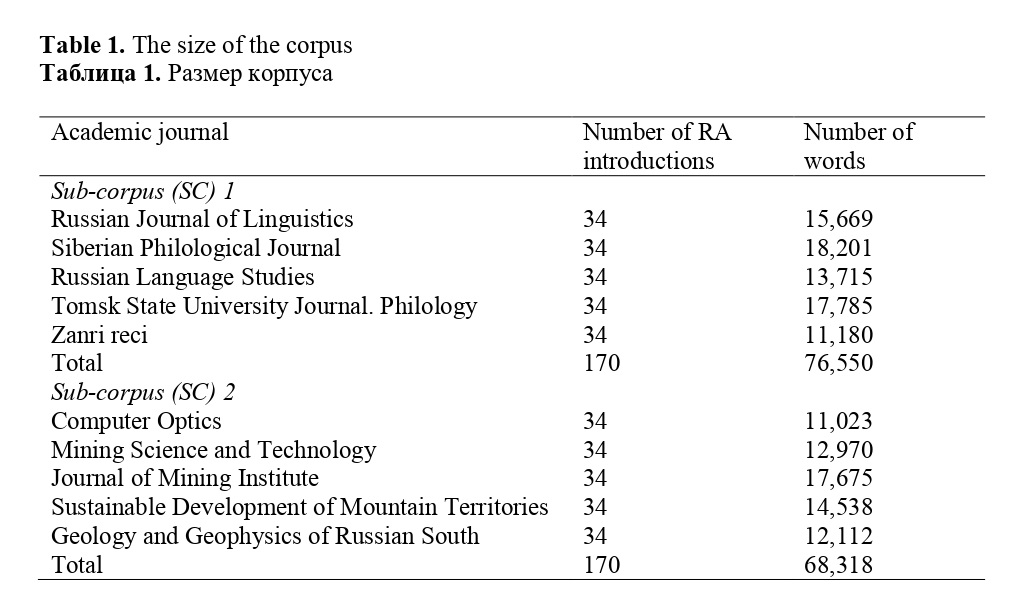
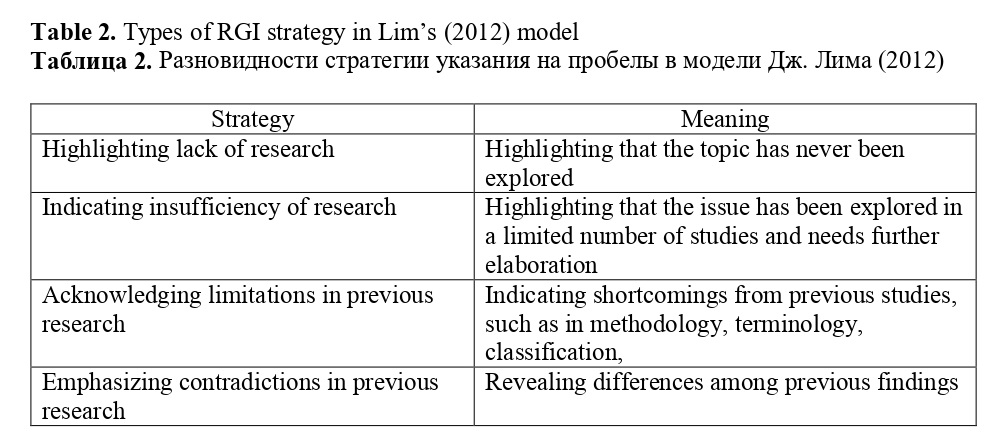



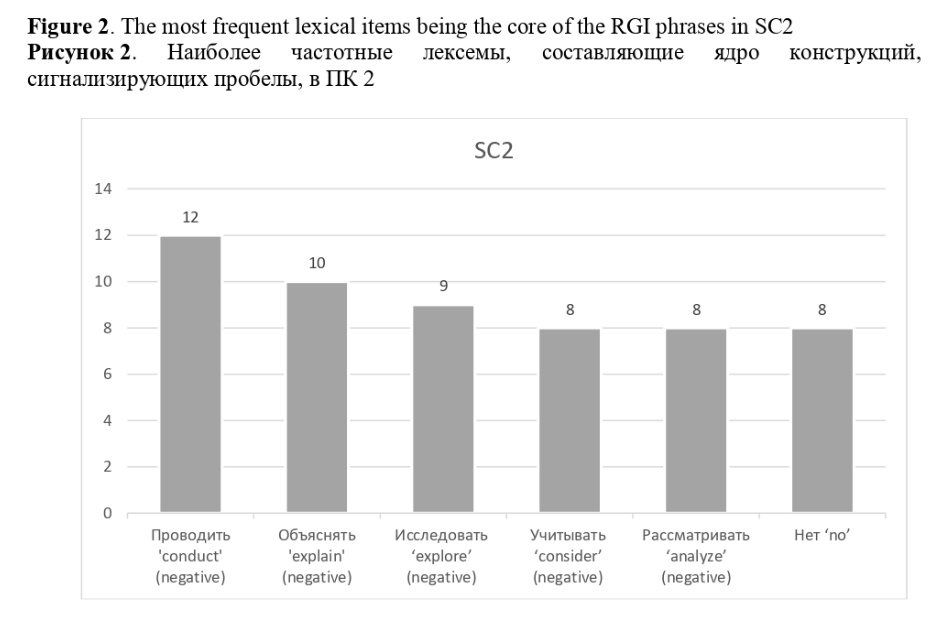
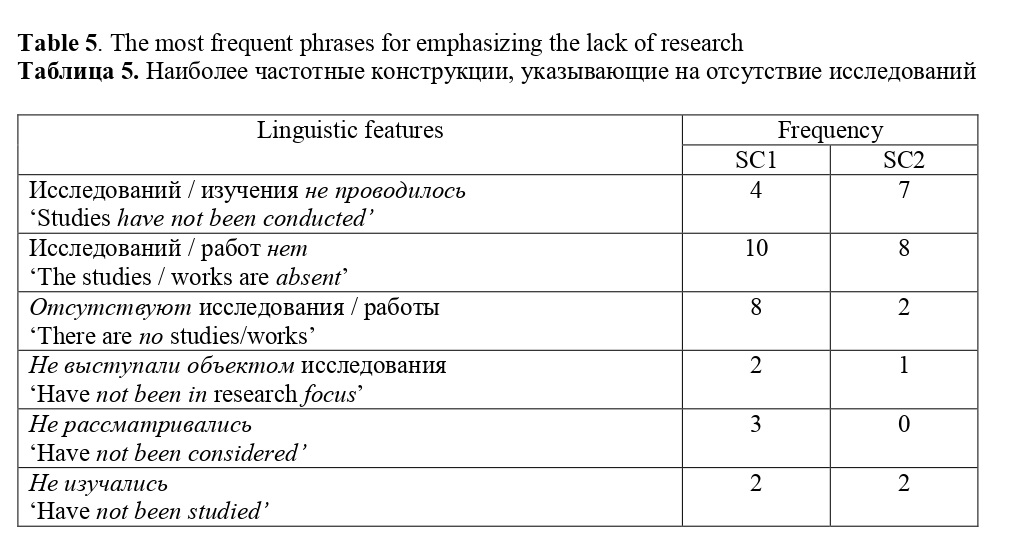
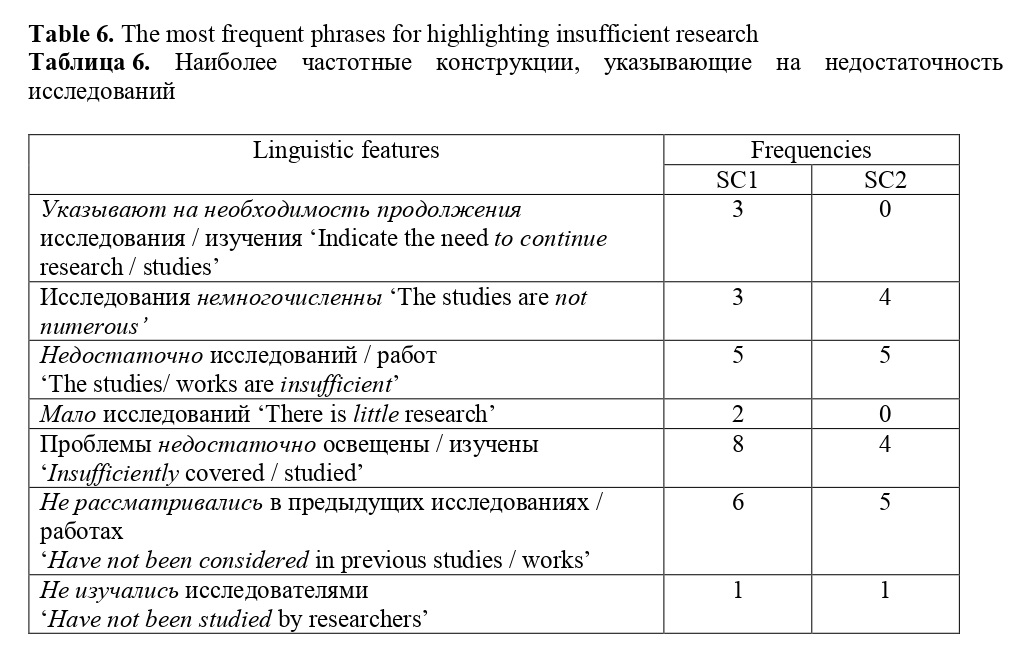
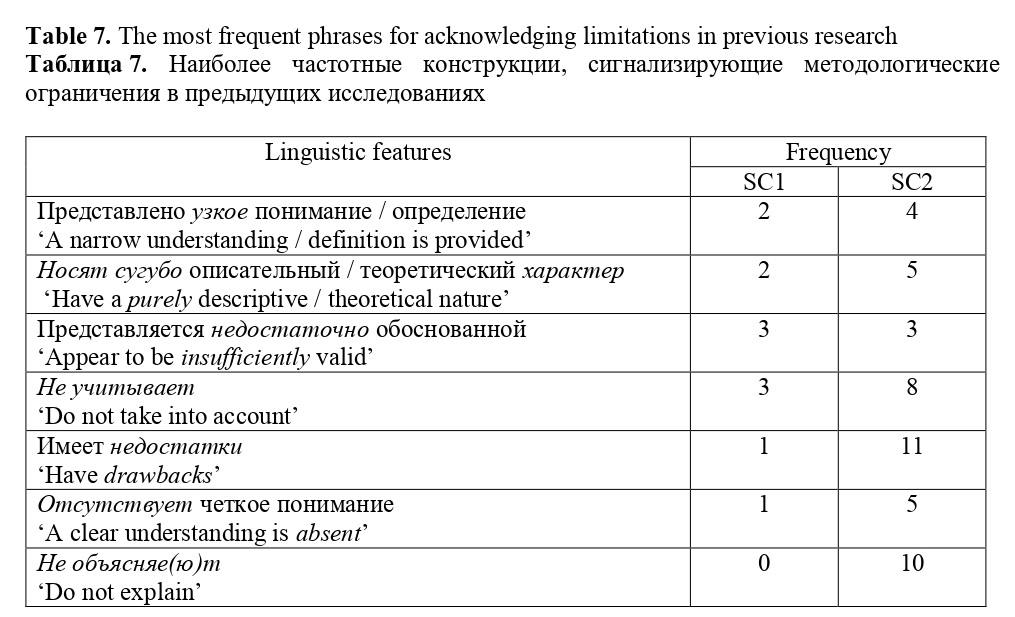
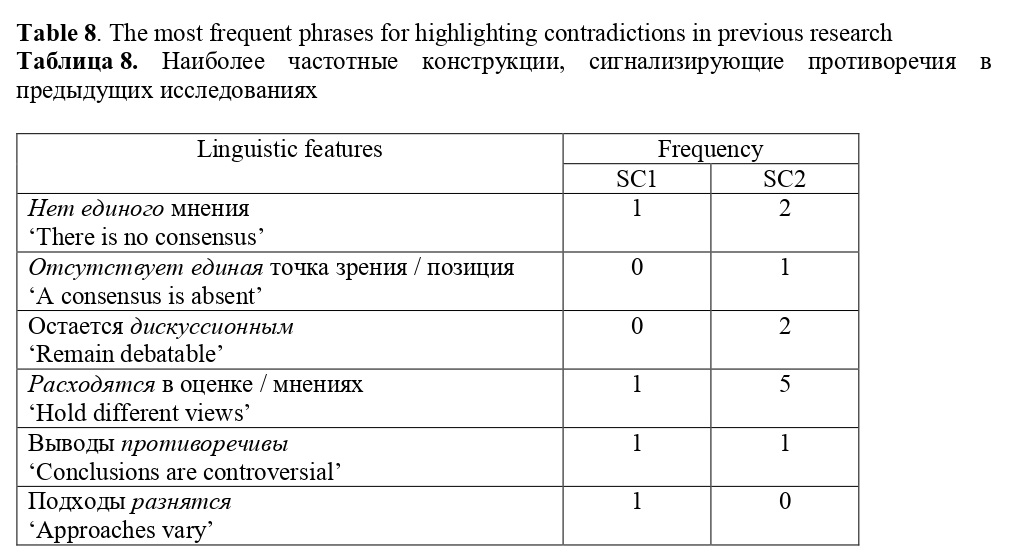
Boginskaya, O. A. (2025). Disciplinary influences on research gap identification, Research Result. Theoretical and Applied Linguistics, 11 (1), 50-71.


















While nobody left any comments to this publication.
You can be first.
Anthony, L. (1999). Writing research article introductions in software engineering: How accurate is a standard model? Professional communication, IEEE Transactions, 42 (1), 38–46. https://doi.org/10.1109/47.749366(In English)
Arianto, A. Saukah, A., Basthomi, Y. and Wulyani, A. (2021). Previous studies have several limitations …: Indonesian doctoral students’, Indonesian academics’, and international authors’ research gap strategies in ELT research article abstracts and introductions, Journal of Language & Education, 7 (2), 25–44. https://doi.org/10.17323/jle.2021.11735(In English)
Arsyad, S., Zainil, Y. (2023). Research gap strategies in article introductions of different rank applied linguistics journals, Studies in English Language and Education, 10 (1), 216–234. https://doi.org/10.24815/siele.v10i1.25302(In English)
Arvay, A., Tanko, G. (2004). A contrastive analysis of English and Hungarian theoretical research article introductions, IRAL, 42, 71–100. https://doi.org/10.1515/iral.2004.003(In English)
Berkenkotter, G., and Huckin, T. (2016). Genre knowledge in disciplinary communication: Cognition, culture, power, Routledge, London, UK. (In English)
Bogdanović, V., Mirović, I. (2018). Young researchers writing in ESL and the use of metadiscourse: Learning the ropes, Educational Sciences: Theory & Practice, 18, 813–830. DOI: 10.12738/estp.2018.4.0031(In English)
Boginskaya, O. (2022). Cross-disciplinary variation in metadiscourse: A corpus-based analysis of Russian-authored research article abstracts, Training, Language and Culture, 6 (3), 55–66. https://doi.org/10.22363/2521-442X-2022-6-3-55-66(In English)
Boginskaya, O. (2023). Lexical realizations of hedging: A cross-disciplinary study of research article abstracts by Russian authors, Vestnik Sankt-Peterburgskogo Universiteta, Yazyk i Literatura, 20 (2), 380–396. https://doi.org/10.21638/spbu09.2023.211 (In English)
Boginskaya, O. A. (2024). The rhetorical step “indicating gaps in previous research”: types and ways of verbalisation, Review of Omsk State Pedagogical University Humanitarian Research, 2 (43), 84–88. https://doi.org/10.36809/2309-9380-2024-43-84-88(In Russian)
Chen, X., Li, M. (2019). Chinese learner writers’ niche establishment in the literature review chapter of theses: A diachronic perspective, Journal of English for Academic Purposes, 39 (1), 48–58. https://doi.org/10.1016/j.jeap.2019.03.006(In English)
Chernyavskaya, V. E. (2023). To be or not to be critical in academic communication? Pragmatics of evaluative language in Russian academic book reviews, Training, Language and Culture, 7 (2), 55–63. https://doi.org/10.22363/2521-442X-2023-7-2-55-63(In English)
Cmejrkova, S. (1996). Academic writing in East European and English, in Ventola, E., and Mauranen, A. (eds.), Academic writing. Intercultural and textual issues, John Benjamins, Amsterdam/Philadelphia, 137–152. (In English)
Dontcheva-Navratilova, O. (2020). Persuasion in Academic Discourse: Metadiscourse as a Means of Persuasion in Anglophone and Czech Linguistics and Economics Research Articles, Persuasion in Specialized Discourses. Palgrave Macmillan Cham, 121–158. https://doi.org/10.1007/978-3-030-58163-3_3 (In English)
Duszak, A. (1994). Academic discourse and intellectual styles, Journal of Pragmatics, 21, 291–313. (In English)
Fredrickson, K., Swales, J. (1994). Competition and discourse community: Introductions from ‘‘Nysvenska Studier’, in Gunnarsson, B.-L., Linell, P., and Nordberg, B. (eds.), Text and talk in professional contexts, Uppsala, ASLA, 9–22. (In English)
Hryniuk, K. (2018). Expert-Like Use of Hedges and Boosters in Research Articles Written by Polish and English Native-Speaker Writers, Research in Language, 16(3), 263–280. https://doi.org/10.2478/rela-2018-0013(In English)
Hyland, K. (1998). Hedging in scientific research articles, John Benjamins, Amsterdam. (In English)
Jogthong, C. (2001). Research article introduction in Thai: Genre analysis of academic writing, Doctoral thesis, Morgantown, West Virginia University. (In English)
Khedri, M., Chan, H. and Tan, H. (2015). Interpersonal-driven features in research article abstracts: Cross-disciplinary metadiscoursal perspective, Pertanika Journal of Social Sciences & Humanities, 23 (2), 303–314. (In English)
Kochetova, L. A., Kononova, I. V. (2022). Сorpus-based contrastive study of discursive strategy of construing interpersonal relations in English language academic discourse, Journal of Siberian Federal University. Humanities and social sciences, 15 (10), 1516–1523. https://doi.org/10.17516/1997-1370-0353 (In English)
Larina, T. (2019). Emotion and Politeness in the Style of Blind Peer review. [Emocii i vezhlivost' v stile anonimnoj nauchnoj recenzii], Aktualnye problemy stilistiki, 5, 40–46. (In Russian)
Larina, T. and Ponton, D. (2020). Tact or frankness in English and Russian blind peer reviews, Intercultural Pragmatics, 17 (4). 471–496. DOI: 10.1515/ip-2020-4004 (In English).
Lim, J. (2012). How do writers establish research niches? A genre-based investigation into management researchers’ rhetorical steps and linguistic mechanisms, Journal of English for Academic Purposes, 11 (3), 229–245. https://doi.org/10.1016/j.jeap.2012.05.002 (In English)
Müller-Bloch, C., and Kranz, J. (2014). A Framework for rigorously identifying rResearch gaps in qualitative literature reviews, The Thirty Sixth International Conference on Information Systems, 1–19. (In English)
Pyankova, T. (1994). A practical guide for the translation of Asian scientific and technical literature into English [Prakticheskoe posobie po perevodu russkoj nauchno-tekhnicheskoj literatury na anglijskij yazyk], Letopis, Moscow. (In Russian)
Posteguillo, S. (1999). The schematic structure of computer science research articles, English for specific purposes, 18 (2), 139-160. https://doi.org/10.1016/S0889-4906(98)00001-5 (In English)
Samraj, B. (2002). Introductions in various disciplines: variations across disciplines, English for Specific Purposes, 21 (1), 1–17. (In English)
Shehzad, W. (2012). Introduction of Computer Science Research Paper: Divergence from CARS, Kashmir Journal of Language Research, 15 (2), 19. (In English)
Stotesbury, H., (2003). Evaluation in research article abstracts in the narrative and hard sciences, Journal of English for Academic Purposes, 2, 327–341.
Suryani, I., Yacob, A. and Aziz, N. (2015). Indicating a research gap in Computer Science research article introductions by non-native English writers, Asian Social Science, 11 (28), 293–302. (In English)
Swales, J. (1990). Genre Analysis: English in academic and research settings, Cambridge University Press, Cambridge. (In English)
Swales, J. (2004). Research genres: Explorations and applications, Cambridge University Press, New York. (In English)
Taylor, G. and Tingguan, C. (1991). Linguistic, cultural and subcultural issues in contrastive discourse analysis: Anglo-American and Chinese scientific texts, Applied Linguistics, 12, 365–382. (In English)
Vassileva, I. (2001). Commitment and detachment in English and Bulgarian academic writing, English for Specific Purposes, 20 (1), 83–102. (In English)
Walková, M. (2018). Author’s self-representation in research articles by Anglophone and Slovak linguists, Discourse and Interaction, 11 (1), 86–105. DOI: 10.5817/DI2018-1-86 (In English)
Wang, Q., Wang, X., Chen, Y. and Yang, K. (2016). Research gap of guidelines might be an important approach to prioritization, Journal of Clinical Epidemiology, 69, 251–252. DOI: 10.1016/j.jclinepi.2015.05.013 (In English)
Warchał, K. (2018). The place of the purpose statement in linguistics article introductions: an English-Polish perspective, Linguistica Silesiana, 39, 327–346. DOI: 10.24425/linsi.2018.124585 (In English)
Zanina, E. (2016). Strategic Hedging: A Comparative Study of Methods, Results and Discussion (and Conclusion) Sections of Research Articles in English and Russian, Journal of Language and Education, 2 (2), 52–60. https://doi.org/10.17323/2411-7390-2016-2-2-52-60 (In English)
Zanina, E. (2017). Move Structure of Research Article Abstracts on Management: Contrastive Study (the Case of English and Russian), Journal of Language and Education, 3 (2), 63–72. https://doi.org/10.17323/2411-7390-2017-3-2-63-72(In English)